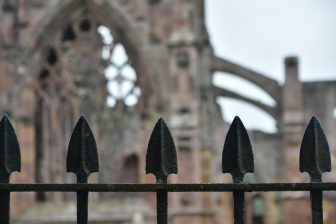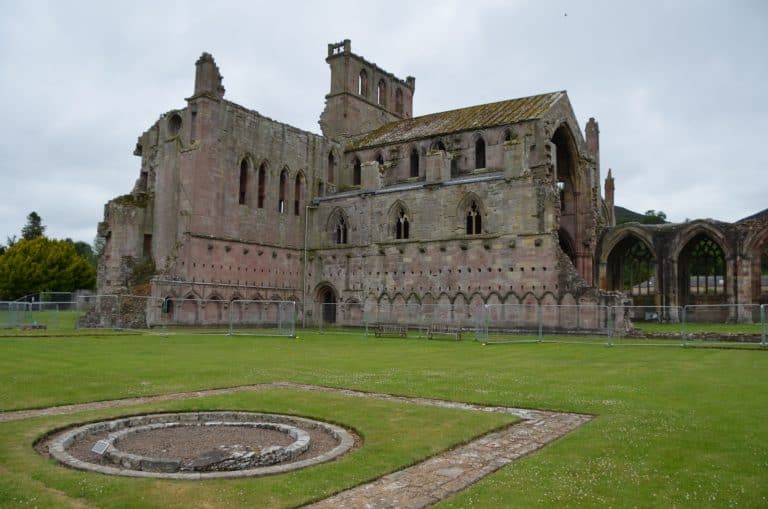
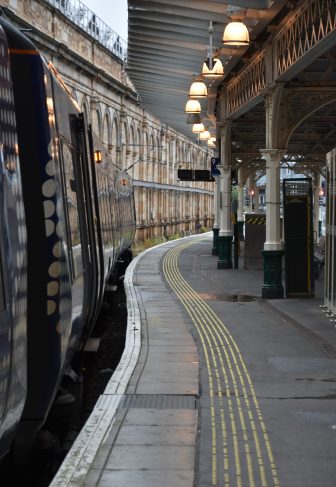
[June 2021] On the last Saturday of our one-month stay in Edinburgh, the weather was not good, but we visited Melrose in southern Scotland as planned.
Again, I’ve been there once with my parents long ago.
It is famous for the ruins of a monastery called Melrose Abbey.
This was our third trip from Waverley Station in Edinburgh, and we thought we knew what we were doing, but this time we were leaving from the platform upstairs, so we were a little lost because we didn’t know the location.
It’s a really complicated station.
The train on that day was quite empty.
It stopped at a number of small unmanned stations, and each time the conductor also served as a station employee.
I couldn’t take a picture, but I was able to enjoy the wonderful scenery full of ups and downs.
For example, there was an old house at the end of a stream, and a green hill in the background.

Both the fog and the rain made the atmosphere mysterious.
We got off at a station called Tweedbank.
It’s a station that have just opened in 2015, and it has at least a toilet but nothing else.
We waited for the bus here for about 20 minutes.
The bus arrived at exactly the time as I expected, and we arrived in Melrose smoothly.
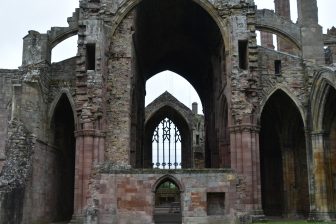
Like other tourist attractions, Melrose Abbey required the booking in advance, so we had bought a ticket for 11:30 entrance beforehand.
The ticket was as cheap as £ 3 per person, and that was because there was a fence around the building so that we could not get close to the building itself, which was a shame.
There was voice guidance using a QR code, but it was recorded before the fence was built, so the story didn’t fit well.
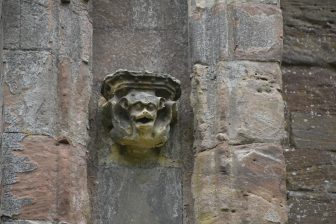
Still, what I found out was that this was a Cistercian monastery founded in 1136, and at one point it had a mighty power.
This area in southern Scotland is called the Scottish Borders, and a number of monasteries were built around here with the Melrose Abbey in the centre.
Since it is a border area with England, there have been many fights since ancient times, and it became customary to pay money and have the monks here pray so that the powerful clans can be protected for the rest of their lives, which made the monastery wealthy.
The building was simple and sturdy when it was first built, but when it became wealthy, the number of decorations added.
It was said that there was also workers’ section on the premises that was not for monks.
However, because of the location, it was often a target of attacks, and it seems that it has been

repeatedly repaired after being damaged many times.
The last monk died in 1590, after which the church in the monastery was used as a parish church until the 19th century.
On the other side of the road, there was a museum where statues, tiles, etc. of the monastery were exhibited.
Once we went out, we went around the site and looked at Abby from the other side.
According to the guidebook, there is a pig gargoyle playing a bagpipe on this side, but I could not
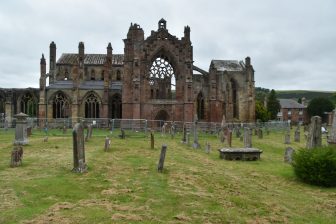
find it unfortunately.
Melrose Abbey is also famous that it has the heart of King Robert the Bruce, who was buried in Dunfermline we visited the other day.


